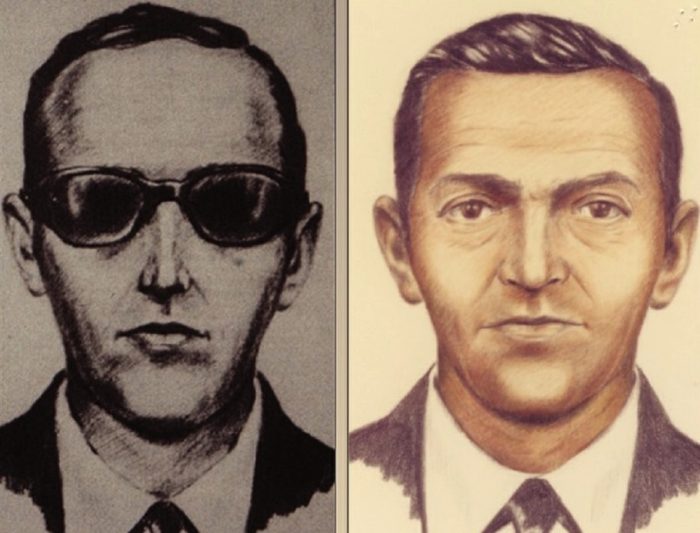
The D B Cooper Mystery
- By
- March 30, 2019
- September 28, 2021
- 21 min read
- Expert Opinion
- 1
- Posted in
- Conspiracy Theory Analysis, Unsolved & Unexplained
It is a mystery that is coming up on being half a century old, and after literally thousands of official suspects, the mystery as to just who was the real identity of the man now known and referred to as “D.B. Cooper” is as much a mystery today as it was in November 1971 when he hijacked a plane (without incident or fatalities) and then as if to add to his legend, successfully negotiated the equivalent of $1.2 million from authorities and seemingly getting away. Almost.

Sketch of DB Cooper
As we shall see as we negotiate our way through this most bizarre and fascinating encounter, of which entire books have been dedicated, not only does his true identity remain unknown, but so do the motives, as does the whereabouts of the cash in small bills that the FBI hand delivered to him. And perhaps above all else, is the question as to whether he actually survived his apparent dare-devil attempt to parachute out of a moving plane to apparent freedom and a life of undisturbed luxury?
Or might such an incident be far too much for the planning of just one man? Might “Dan Cooper” as he checked in for his flight that November afternoon, have been on the payroll of one of the world government’s intelligence agencies or some other mercenary group? Perhaps one from within the United States themselves? If so, what was the purpose of such a stunt? Might there be a connection to the Cold War which was at its height at the time?
Or might this mystery person have come from and retired to an altogether alien background? And the hijacking a way to obtain monies for future, equally unknown and mysterious ventures?
Contents
- 1 The Night Before Thanksgiving, Portland, Oregon 1971
- 2 “Miss, You’d Better Look At That Note!”
- 3 He Was “Rather Nice” And “Thoughtful!”
- 4 Temporary Landing At Seattle-Tacoma International Airport
- 5 Somewhere Between Seattle And Reno, Nevada…
- 6 The Beginning Of An Endless 50-Year-Plus Investigation
- 7 Jump Time Around 8:13 pm Over The Lewis River
- 8 Endless Speculation and A Plethora Of What-Ifs!
- 9 The 1980 “Buried Bills” Discovery
- 10 Did Cooper Survive The Jump?
- 11 More And More Unanswered Questions!
- 12 The Profile Of An Unknown Man
- 13 Dan Cooper – An Identity Up For Grabs!
- 14 The “D B Cooper” Suspects
- 15 Where Did All That Money Go? Where Is It Today?
- 16 A Twisted, Contemporary, Romantic Legend Of Our Times
- 17 Expert Opinion
The Night Before Thanksgiving, Portland, Oregon 1971
On the 24th November 1971 at Portland International Airport in Portland, Oregon, “Dan Cooper” would approach the desk for the Northwest Orient Airlines flight and proceed to purchase a one-way ticket for Flight 305, a short trip to Seattle in the neighboring state of Washington to Oregon’s north. The journey would take around half an hour if, of course, all went according to plan.
With him, he had a black briefcase which he carried with him onto the plane, which was scheduled to leave at 2:50 pm. Other passengers on board the plane would describe him as looking “middle-aged”, possibly in his mid-40s, with short hair. He wore a black suit with a white shirt and a black clip-on tie. He also wore a black raincoat.
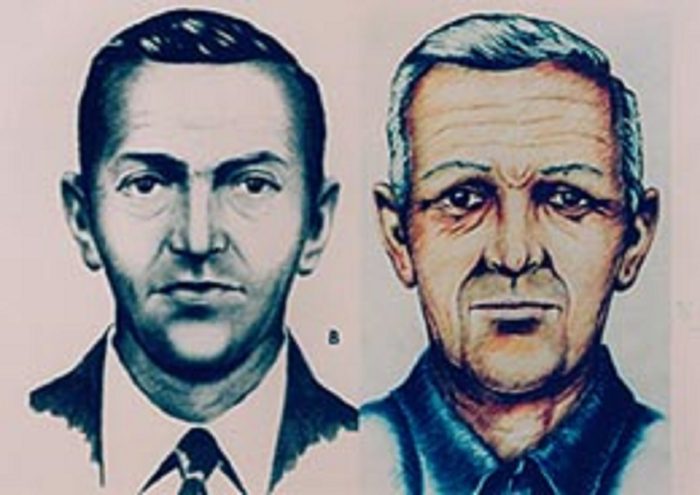
Further images of DB Cooper
Upon boarding the plane, he would position himself somewhere in the rear of the cabin. He would then light a cigarette (remember, you could smoke in public places then) before ordering a bourbon with soda from the stewardess.
The flight itself was on its way from Washington DC, with Portland being the last of several stops before reaching its final destination of Seattle. It was only a matter of minutes after the take off to that final destination when Cooper would put his plan into motion.
“Miss, You’d Better Look At That Note!”
One of the flight attendants, Florence Schaffner, happened to sit near to Cooper, near the stair door. Cooper would calmly move forward slightly, enough to pass a note of paper towards her. She took it politely, thinking it was his phone number and so put it into her purse, unopened and unread.
Seeing this, she would recall how he would state to her:
Miss, you’d better look at that note! I have a bomb! [1]
At least that is as best as she could remember it, as once he was satisfied that she had taken in the details he quickly retrieved it from her. She would recall it was written in very neat, capital letters with what looked to be a felt-tip pen.
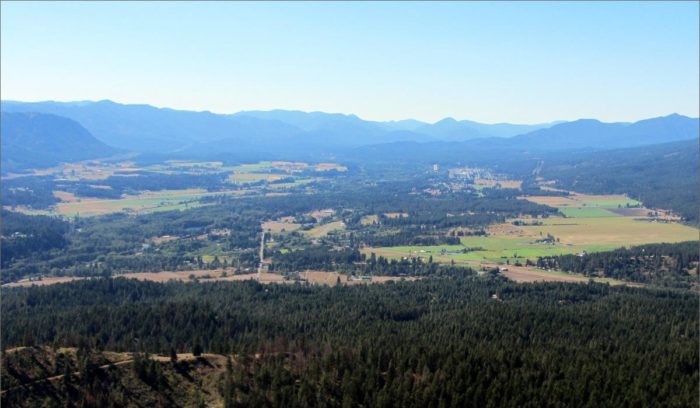
The terrain of Northwest America
Cooper then asked the flight attendant to move seats and sit next to him, which she duly did. Using her professionalism in order to take in as much detail as possible, she would ask him if she could see the bomb. Quietly, he opened the briefcase slightly, but enough for her to clearly see eight red cylinders, each with wires and insulation coming from them leading to a central battery.
Convinced he had her attention, he would close the briefcase again before stating to Schaffner a list of his demands. He would ask for $200,000 (just over a $1 million today) as well as four parachutes. Furthermore, he wanted a fuel truck to be ready on the runway when the plane landed so it could be refueled immediately after landing.
The attendant, calmly as she could under the bizarre and unnerving circumstances, would make her way to the cockpit to inform the pilots of the situation. When she arrived back, Cooper sat there as if nothing had happened, a pair of dark glasses now resting upon his face.
He Was “Rather Nice” And “Thoughtful!”
Shortly after Schaffner returned and sat back in the seat next to Cooper, an announcement came over the speakers of the plane stating that a “minor mechanical difficulty” would result in a short delay to their arrival at Seattle-Tacoma Airport.
In reality, shortly after receiving the information from Schaffner, pilot, William Scott would make immediate contact with air traffic control at the airport. They, in turn, would contact local authorities. Before long, federal authorities were also on alert. The delay was, in fact, to allow the authorities the time to issue the money and locate the parachutes.
Perhaps unbelievably, they would ultimately do exactly that.
In the meantime, as the Boeing 727 airplane maintained its altitude above the northwestern states of the United States, Schaffner would continue to make mental notes about this apparently sleek and disturbingly calm hijacker.
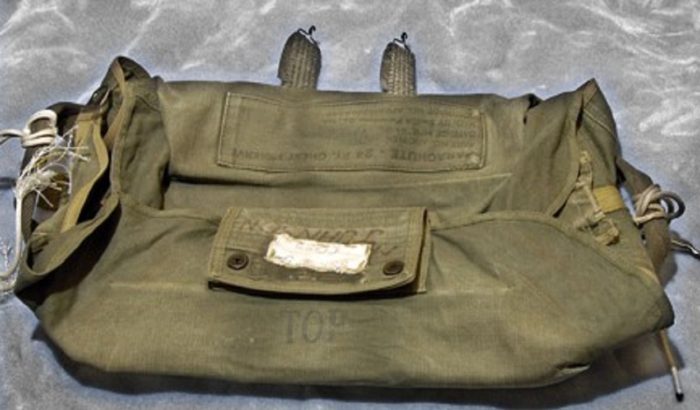
Recovered Satchel
She would remark later to investigators that he very much appeared to know the layout of the land below. He would correctly pick out certain regions, for example. Perhaps also intriguing was his remark of McChord Air Force Base being nearby to their ultimate destination. It was certainly not the mindset of an opportunistic criminal.
Nor was his demeanor, which Schaffner would recall as polite and very well-spoken. Indeed, another flight attendant would describe him as “rather nice” and even “thoughtful and calm”. He would order another drink and seemed understanding of the wait before them. He would even offer to pay for all the meals of the flight crew who would be delayed in the air also.
In short, there was something very intriguing, and most certainly different about Dan “DB” Cooper.
Temporary Landing At Seattle-Tacoma International Airport
It was 5:24 pm when Cooper received notification that all of his demands had been met. Fifteen minutes later, at 5:39 pm the plane would land at Seattle-Tacoma Airport. By this time, the skies were almost completely dark. Cooper would give instructions to Scott that he should land the plane in an isolated but brightly lit part of the airport. The onboard attendants also received instructions to pull down all of the window blinds.
While the airplane was being refueled as per Cooper’s strict instructions, the money sacks and parachutes were brought to the plane. Cooper would order that all of the passengers should leave the plane. He would also state that Schaffner as well as another flight attendant should also leave.
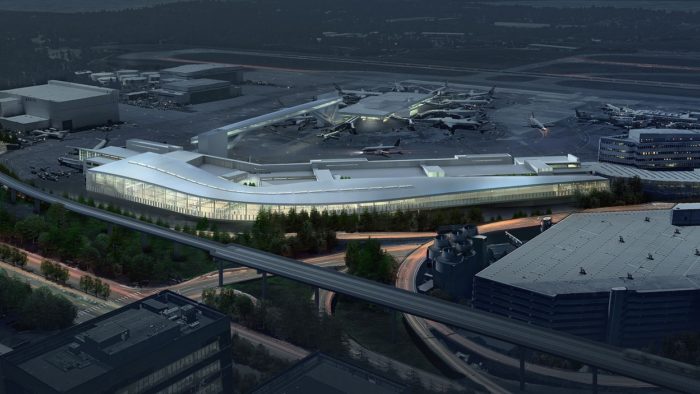
Seattle-Tacoma Airport
Now, there was only Cooper and the flight crew on board. It was during this time, while the refueling was taking place, when Cooper would present the next part of his plan. Going at the minimum possible speed, they were to head for Mexico City. And they should do so at a strict altitude of 10,000-feet. It was agreed that they would have to stop at Reno, Nevada to refuel once again.
Perhaps even more intriguing, and certainly indicative of the intricate and extensive planning that had gone into the hijacking and now transportation of thousands of dollars, Cooper would insist that the landing gear was to remain active in the landing position. Furthermore, the cabin was to remain unpressurized and the wing flaps were to be lowered by 15 degrees.
Somewhere Between Seattle And Reno, Nevada…
Almost two hours exactly after landing, at 7:40 pm, the plane left the runway of the Seattle-Tacoma airport and would take to the skies once again. Along with Cooper was the pilot, copilot, a remaining flight attendant, and a flight engineer.
Unbeknown to Cooper, two F-106 fighter jets were scrambled from the nearby McChord Air Force Base. One would take a higher altitude while the other would fly below. Both would remain out of view of Cooper. Several other planes would also trail the hijacked plane.
Cooper would put his plan into motion almost immediately after the take-off. He would instruct the flight attendant to go to the cockpit and join the other three crew members. She did as he instructed. However, as she made her way there, she witnessed Cooper tying something around his waist.
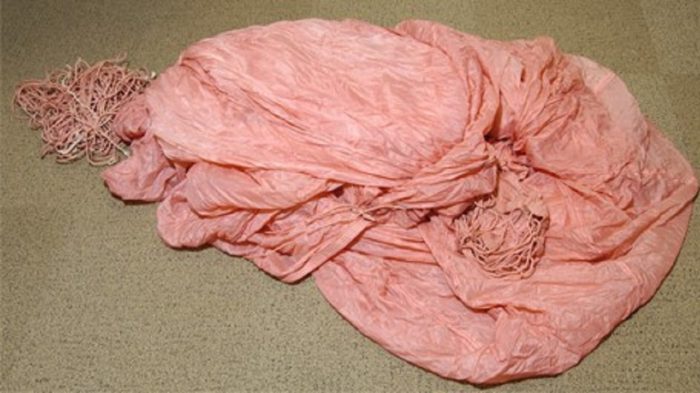
Recovered parachute
A short time later, at a little after 8 pm, the crew members in the cockpit noticed the warning light come on. There was a problem with the air pressure in the cabin. They would offer assistance, which was bluntly refused. Then, the change of air pressure suggested one of the doors was open.
By the time the plane landed at Reno at 10:15 pm as previously agreed, it was evident that Cooper was no longer on board the plane. Nor was the money, or two of the parachutes.
Of the five planes that were trailing the airliner, none of the pilots would report witnessing any type of deployment from the Boeing. Where Cooper was, and when he chose to vacate the plane was a mystery.
The Beginning Of An Endless 50-Year-Plus Investigation
Almost immediately upon the plane’s wheels touching the tarmac federal agents descended upon it. And as much as they would find, the evening would be the start of a 50-year investigation that continues – albeit unofficially – to this day. They would yield over 60 fingerprints, as well as the black clip-on tie that Cooper boarded the plane wearing. Ultimately, though, the identity of the “DB Cooper” would elude them.
There were close to a thousand suspects at one point in the investigation. However, these suspects, at least in a serious capacity were essentially ruled out by investigators.
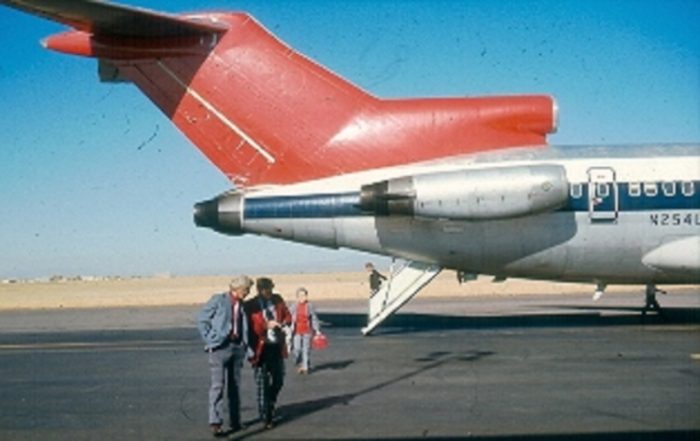
Open Airstair of Boeing 727
In fact, one of the first was a resident of Oregon named D.B. Cooper. He had a minor police record, and while investigators didn’t seriously suspect him of involvement in the hijacking, they did question whether his name and identity had been used by the person who had. There was apparently no such connection, and he was officially ruled out as a suspect.
However, it is from this initial questioning and release of details that the moniker “D B Cooper” comes from. As we know, the hijacker used the name “Dan Cooper” when boarding the plane. However, an Oregon journalist, who has since claimed he was rushing his work to meet a deadline, picked up on the recently ruled out suspect’s name and put this forward as the false name of the hijacker. It has since stuck.
The $200,000 in cash had all had their serial numbers dutifully recorded by authorities before they were handed over to Cooper. Now, with their suspect apparently vanished into thin air, they would issue lists of these serial numbers to banks and other businesses that dealt in large cash transactions such as race tracks and casinos, for example.
Jump Time Around 8:13 pm Over The Lewis River
Based on the testimony of the crew, investigators would manage to narrow down what they believed to have been the time that Cooper left the plane, seemingly with a parachute on, and another parachute as a spare.
The pilot, William Scott, had reported a sudden upward movement of the plane’s tail section at approximately 8:13 pm. This could suggest that the plane had lost a significant weight – possibly that of a grown adult male. Investigators would have Scott fly the exact same plane along the same flight path. They would then push out a weight of 200 pounds – around the weight of an average male adult. The result was the tail experienced an upwards movement almost identical to the evening in question.
Remember, there were five planes discreetly following the airliner after it left Seattle-Tacoma Airport. And although they were far enough out of range for Cooper to have seen them visually, they had the Boeing 747 in sight the whole time. And most importantly, each pilot stated specifically to seeing nothing that would even indicate a person had jumped out of the plane.
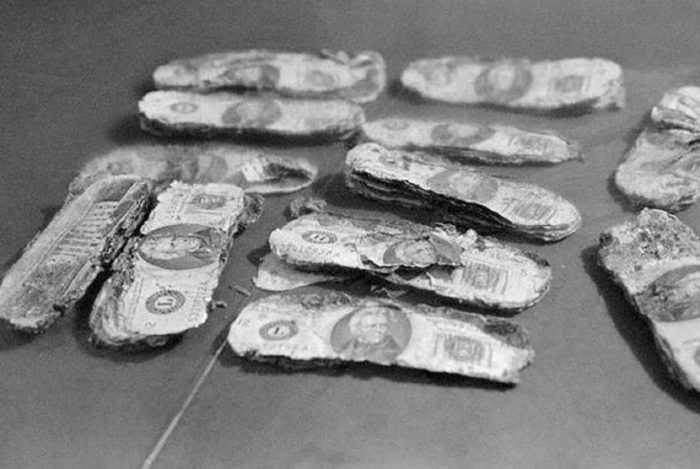
Recovered dollar bills
However, the evidence suggested that at around 8:13 pm, Cooper parachuted out of the plane with the money and the spare parachute.
At this time, there was a particularly heavy rainstorm, which even the well-prepared Cooper couldn’t have fully anticipated. A check of the flight path of the plane revealed that at the time of the presumed jump, the plane was over the Lewis River.
Searches would go ahead around Mount St. Helens area of southwest Washington. As well as intricate searches of the vast regions and mountainous terrain of the area, investigators would do door-to-door questioning of residents, as well as searching any premises that could serve as a hideout.
Endless Speculation and A Plethora Of What-Ifs!
They would find no trace of Cooper, the money, or the parachutes. It was as if he had literally vanished into thin air.
Investigators would wonder publicly if anyone could survive such a drop, parachute or not, in the conditions in question, as well as coming down in such an unforgiving landscape. However, despite the odds, anyone with basic training could certainly do so. One could be forgiven for thinking such thoughts were a discreet caveat for the realization that their suspect had seemingly got one over them.
Might the hijacker even have had help? And was, as it seemed, the motivation purely financial?
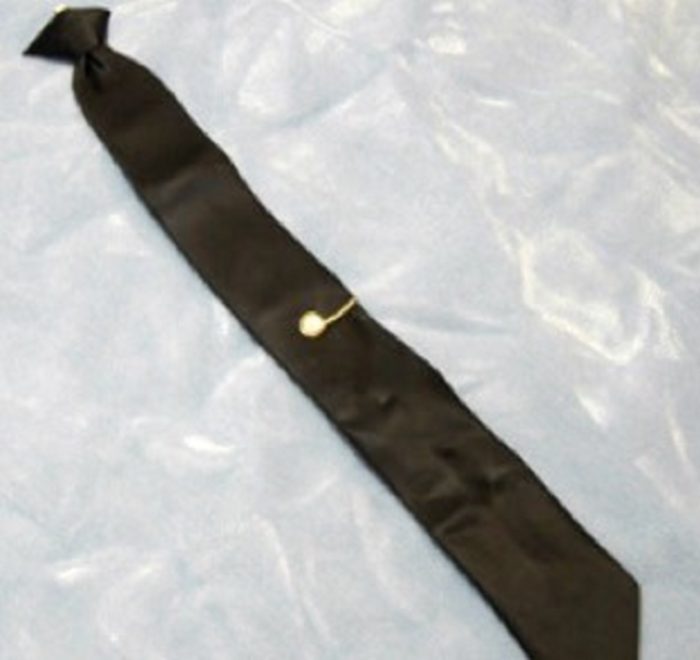
Clip-on tie
Again, while this is pure speculation, what if there was somebody else on that plane that investigators simply don’t know about? Is that why two parachutes were missing? At the time, domestic flights in the United States were not at all subject to the strict conditions they are now.
If, for example, as many researchers have suggested, that Cooper worked for one intelligence branch or another, it would not at all be beyond the realm of imagination that a fellow agent or contact could board a plane discreetly – especially at one of the many stops along the way.
By the mid-1970s, despite numerous interviews and public appeals, it appeared the investigation was stuck. And while it was not officially closed for decades, it would begin to take a backseat to other federal matters, only occasionally coming back into the public arena upon the discovery of new evidence or claims.
Officially, the case was “closed” in 2016. However, it was done so with a rather open-ended caveat that the public should still contact them if they felt they had new evidence or discoveries regarding the case.
The 1980 “Buried Bills” Discovery
The case was dragged back into the national news in 1980 following the discovery of just over $5,000 of the bills issued to Cooper by a young boy, Brian Ingram, who was camping with his family on the banks of the Columbia River in the state of Washington. Ingram would tell the media in 2006 [2] that:
We were going to make a campfire. My dad was getting ready to put the wood down, and I was smoothing the sand. That’s when I found what felt like old newspaper!
Upon further digging Ingram recovered a total of $5,800 in $20 bills. The family would contact local police, who in turn would match the serial numbers of the bills to those issued by the FBI to Cooper in November 1971. This find remains the only physical evidence of Cooper’s “escape” from the plane.
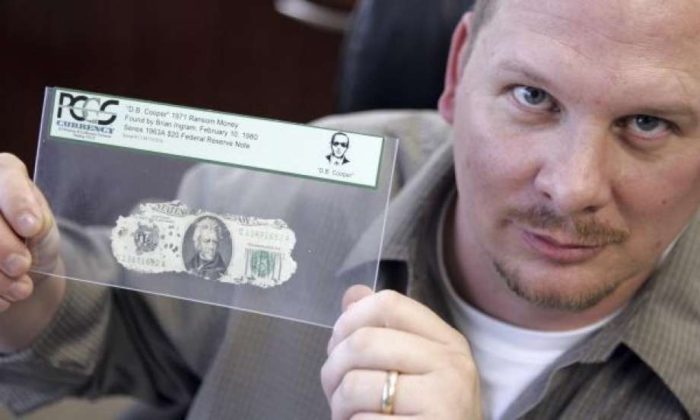
Example of recovered dollar bill being held by Brian Ingram
Incidentally, the FBI would hold the money until 1986. Then, after dividing it up between the federal agency, the airlines and insurance companies, just under $3,000 was returned to Ingram. The money, in reality, was damaged and deteriorated to the point where it was worthless as actual money. However, it was a priceless piece of history, preserved from one of the most legendary cases, albeit of a plane hijacking, in recent history.
However, many questions were brought up as a result of the find. Not least, who buried it there? And why? And perhaps of most importance, as we will examine in a moment, the find would suggest that Cooper had indeed survived the landing that rainy evening in November 1971.
Did Cooper Survive The Jump?
Following the discovery on the banks of the Columbia River in 1980, initial reports from investigators would suggest that the bills had floated to their final destination freely and through the currents of the water. This, they would claim, further supported the evidence that Cooper had not survived the landing. For example, one of the investigators, Larry Carr, would claim in his report that they ruled out Cooper having any experience parachuting out of planes.
According to his field report:
…Even if he (Cooper) did land safely, agents contended that survival in the mountainous terrain at the onset of winter would have been all but impossible without an accomplice at a predetermined landing point! [3]
Even if an accomplice was present at a predetermined destination, Carr would state that Cooper had “no idea where he was when he jumped”. This, he claimed, was due to the visibility being zero due to cloud cover.
However, perhaps we should take our minds back to the flight attendants who clearly recalled how familiar Cooper was with the terrain below them as they circled waiting to land following his hijacking of the plane shortly after leaving Portland.
Furthermore, although there were delays in leaving Seattle, once he was airborne, at a rate and altitude, including keeping the plane in landing mode, which were all at his request, even with zero visibility it is certainly possible that using a timing-type plan, he could jettison at exactly X amount of time after take-off, and then even with wind and other factors to take into consideration, could have landed within a reasonable distance of a potential accomplice.
At least in theory.
More And More Unanswered Questions!
Even if Cooper had worked completely alone, if he knew the terrain as well as it appears he did, his chances of survival were perhaps not as slim as investigators might have led the public to believe. Furthermore, when investigators began to look at the recently discovered bills more closely, it became increasingly likely that the theory of them floating down the river of their own accord after breaking free of Cooper’s apparently deceased body was wrong.
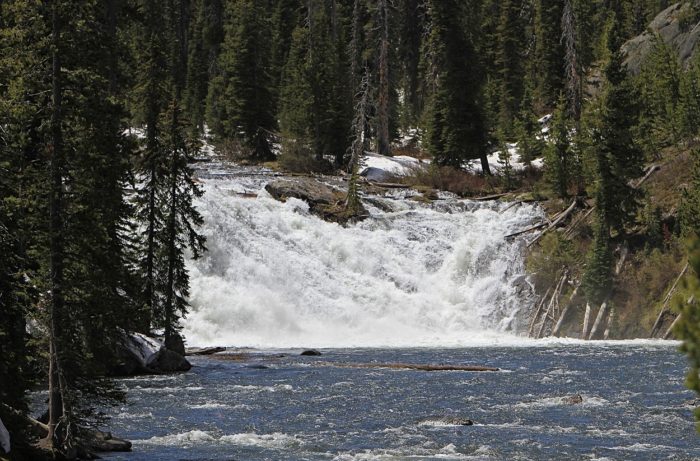
Rough waterways of Northwest America
Furthermore, research by investigators would suggest that the money was placed in the river bank several years after the 1974 dredging operation that took place there. And what’s more, they could show sedimentary evidence to back up their claims. This, then, would mean that Cooper, or at least someone who had access to the money he dove from the plane with, manually brought the money here and buried it only several years previously.
Why would they do so? Was it Cooper? Or might, as some researchers have suggested, the money have been found by a simple passer-by hiking or hunting in the area? Had they then stashed the money away rather than inform authorities? If so, why, and was there more if it sitting in a house somewhere in the state of Washington? And, if it wasn’t Cooper who stashed the money, where was he now?
The questions, theories, speculation, and the suspects would just keep cropping up.
The Profile Of An Unknown Man
As with any crimes of this nature, teams of investigators would “profile” their likely suspect. And this was much the same with the investigators involved with identifying Dan Cooper.
They would note, for example, that his apparent extensive knowledge of the terrain not only suggested someone local or at least familiar with the northwest region of the United States, they were familiar with it from the air. This suggested apparent military air force training.
Furthermore, partly due to his “non-specific” accent and partly due to the identification of “Dan Cooper”, a fictional Canadian Air Force pilot in a Belgian comic book that was widely available in Europe and Canada, some speculated he was a veteran with considerable time spent in Europe, or that he was indeed a Canadian citizen.
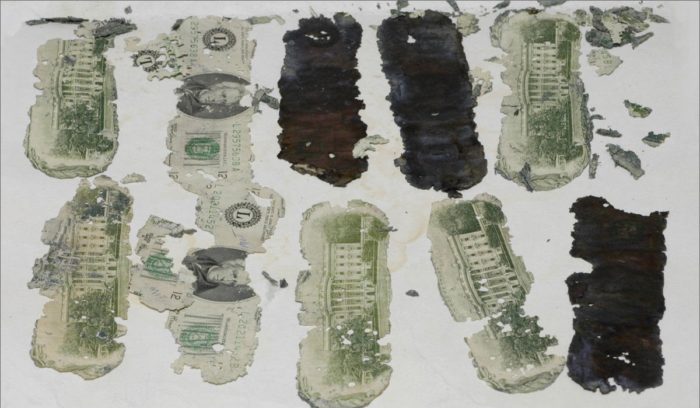
Recovered dollar bills
Perhaps, if this last point was true, it was Cooper’s plan to head north and over the Canadian border in the uppermost north part of the state of Washington.
Furthermore, his knowledge of air travel and the Boeing 747 itself was obviously intricate and extensive, right down to the knowledge of keeping the plane at a (relatively speaking) slow pace at a low altitude – something that was (at the time) unique to such a large airliner to this plane.
Perhaps the one sticking point in the whole affair, despite the request for “negotiable American currency” – a request that in itself suggested a non-American citizen – was how he planned to spend the money without it eventually leading back to him and his arrest. And while he could perhaps spend such money in black market circles, at some point, unless the money remained in such circles which was unlikely, that trail would begin.
Just who was Dan “D B” Cooper? And where did he go?
Dan Cooper – An Identity Up For Grabs!
The fact is, we don’t have any idea who Cooper was? Quite literally, half a century later, any scenario, no matter how bizarre, is arguably worth listening to.
And, as wildly speculative as it is, and offered by way of play The Devil’s Advocate and to ensure we truly have covered all bases and possibilities, what if Cooper was some kind of extraterrestrial being? One that, no matter where in the Universe he might have come from, still required a substantial amount of money to conduct its clandestine interplanetary mission here on Earth?
There are plenty of accounts on record of people claiming to have met such alien entities, some of them quite high-ranking officials. There were also the more recent claims of the apparent alien-hybrid discovered in his car in Los Angeles, apparently with an abundance of cash and weapons, and no explanation as to where any of it came from.
Might that explain his sudden disappearance off the face of the planet? Indeed, without letting our already active imaginations run away with themselves, might it be possible that such a cosmic agent might have changed identity and appearance shortly after obtaining the cash.
Whatever the real identity and motive of D B Cooper, however mundane or extraordinary the circumstances surrounding the hijacking, we should perhaps remind ourselves once again that nobody was hurt, and not one act of violence was used. Was this just pure luck and circumstance that stopped Cooper from using taking such measures? Or was this very much part of the make-up and nature of the person, wherever they come from, behind the name, Dan Cooper?
The “D B Cooper” Suspects
While there have been literally over a thousand suspects in the D B Cooper cases, none of them were ever charged. And while we are not going to profile each and every one of those suspects for obvious reasons, there are some that are more intriguing than others. [4]
Kenneth Christiansen
Perhaps one of the main suspects in the Dan Cooper case, and certainly one of the most recent is Kenneth Christiansen. Christiansen’s name surfaced following the publication of the book Skyjack – The Hunt for D B Cooper by Geoffrey Gray.
Gray would claim that Christiansen’s brother, Lyle, had approached him following Kenneth’s death believing he had evidence that his brother was indeed Dan Cooper.
According to Lyle, his brother had served as a paratrooper in the Second World War and would go on to become a mechanic for Northwest Orient Airlines. Furthermore, he had a similar look to the descriptions given of Cooper, and like Cooper, had a particular liking for bourbon and soda.
Even more interesting, Kenneth Christiansen had purchased a “modest” house not long after the hijacking. So lavish that he couldn’t really explain where the funds came from – not that his family pressed him on it. Privately, though, Lyle had his suspicions.
Duane Weber
The claims of Duane Weber would actually come to the wider world through his widow several years after his death in 1995. Although Weber was a veteran of the Second World War, he had seemingly found life difficult once arriving back in the United States. He would serve time in six different prisons between 1945 to 1968 for crimes such as burglary and forgery.
Days before he passed away, he asked his wife to come closer to him. As close as she could. Then, he said to her in all seriousness:
I have a secret to tell you. I’m Dan Cooper!
The name meant absolutely nothing to Jo Weber. However, as time went on, and specifically spurred on by a friend who informed her of the D B Cooper hijacking, she began to come to a startling realization. She would rent a book out on the Dan Cooper hijacking and discover handwritten notes in the margins. All of which were unmistakably written in her husband’s handwriting.
Other things now took on new meanings. For example, he would wake from nightmares, often during which he was talking in his sleep about “leaving fingerprints near the stairs” while on a plane. Furthermore, he had a permanent knee injury that he claimed had occurred years ago while “jumping out of a plane”.
Even more bizarre, Jo would discover among her husband’s possessions the remains of an old Northwest Airline ticket from the early-1970s. Stranger still, in late-1979, he had taken a trip to Seattle. And had very specifically taken a walk alone along the Columbia River bank. Only months later, the young Brian Ingram would discover the stash of money in the same area.
Further still, all of his life, Weber smoked, almost one after the other, and drank bourbon.
Lynn Doyle Cooper
In 2011, Marla Cooper would claim that her late uncle, Lynn Doyle (L. D.) Cooper was the infamous D B Cooper. Furthermore, when she had first begun to present her theory to family members, Lynn’s sister, Grace Hailey would agree with her. And would even offer her own evidence to support the claims.
In fact, it was Hailey’s supportive evidence that, at least initially, made the FBI look into the claims further.
Marla Cooper had claimed that her uncle had arrived at their family home in northwestern Washington, on Thanksgiving weekend. What’s more, he looked quite beaten up and claimed he had been in a car accident. Even more interesting, she could recall her uncle Lynn, along with another unnamed uncle, planning something “very mysterious” using “expensive walkie-talkies”.
When ABC News reported on the claims, Hailey would offer without hesitation:
I’ve always had a gut feeling it was L D. I think it was more what I didn’t know us what me suspicious than what I did know, because whenever the topic came up (at home) it immediately got cut off again!
Despite failing to link Lynn Cooper through DNA evidence, he was not officially ruled out as a suspect.
William Gossett
Another interesting suspect is William Gossett. He had an active military career serving in both the Korean and Vietnam Wars. He also had training in parachuting and survival in harsh environments. And would go on to teach military law at University level. He would even host a regular radio talk show. He also, according to his son, Kirk, had a hopeless gambling addiction. And was a “compulsive gambler” who was always “strapped for cash”.
What’s more, he had an active interest in the Dan Cooper case. Even keeping as many newspaper articles and news items he could find. He certainly didn’t keep his interest a secret. He didn’t, however, make any claims of being the mystery man behind the infamous hijacking. That was until shortly before his death.
In the final years of his life, Gossett would tell his three sons, as well as friends who had served as a judge and in the public defender’s office respectively, that he was Dan Cooper. And he had committed perhaps one of the most infamous hijackings in American aviation history.
Furthermore, Kirk Gossett would recall an incident just before Christmas 1971. He had accompanied his father to Vancouver in British Columbia, Canada. There he produced a set of keys for a safe deposit box. And went on to show the young boy “wads of cash” he took out of the box. He would then lock it back up again.
Photographs of Gossett taken around 1971 do indeed have a remarkable resemblance to the identity sketches. Whether he is the Dan Cooper of that November 1971, however, remains open to debate.
Robert Richard Lepsy
One of the strangest claims of the real identity of Dan Cooper, and certainly reason enough to include it here, are those that state him to be Richard Robert Lepsy.
Lepsy, who was a married 33-year-old with four children who worked as a grocery store manager in Grayling, Michigan simply disappeared in strange circumstances [5] in October 1969. Three days after going missing, his vehicle surfaced at a nearby airport. Staff would claim a man matching Lepsy’s identity had voluntarily boarded a plane on its way to Mexico.
The authorities seemed satisfied that Lepsy had indeed got on the plane to Mexico of his own accord. And while they might be able to argue the moral aspect of his decision to do so, legally there was nothing they or anyone else could do. With that in mind, they would close the investigation into his disappearance.
However, following the publicity of the Dan Cooper and the sketch artist pictures that appeared nationwide throughout late-1971 and all of 1972, members of his family would come forward. They would claim the mystery hijacker to be Lepsy. Even the dark suit and clip-on tie, they would claim, was his. Exactly the same as he would wear each day at the Michigan grocery store.
Whatever the truth of the matter, Lepsy apparently died in 1976. A DNA sample went to the FBI in 2011 from members of his family. There has, however, been no official comment. Or even acknowledgment of any tests or results.
Might Lepsy have been Dan Cooper?
Walter R. Reca
The apparent confessions of Walter Reca as Dan Cooper are most certainly of a serious nature. In the summer of 2018, former airline pilot, Carol Laurin, would claim that his friend, Reca, had made the bizarre confession to him through a purposely recorded telephone conversation a decade previously in 2008 on the condition that Laurin keep the information to himself until after his death.
When Reca died in 2014, and after his own investigation, Laurin would step forward with the information.
In total, as well as the three hours of telephone conversations – which took place over several weeks – Laurin had various witness statements and documents that did indeed appear to support Reca’s version of events in their entirety.
What’s more, when experts examined Laurin’s research, specifically forensic linguist, Joe Koenig, and compared it with the FBI’s investigation notes, they would conclude that there was nothing that could outright rule Reca out as a suspect. Koenig himself would state publicly his belief that Reca was indeed D B Cooper.
Other than for financial benefit, however, it is perhaps difficult to understand why someone would take such a risk. Regardless, claims of Reca being Dan Cooper rank among the strongest.
Robert Rackstraw
Perhaps one of the most interesting names on the D B Cooper suspect list is that of Robert Rackstraw. Not least as it has made an appearance twice – first in the late-1970s, and again more recently in 2016. [6]
Rackstraw was a former military pilot who had spent considerable time in Vietnam. However, in 1978 he would face deportation back the United States from Iran on explosives and fraud charges. While on bail, he would bizarrely attempt to fake his own death by sending out distress calls from a rented plane. He was ultimately later arrested once more, this time on fake pilot license charges.
Despite his apparent long list of wrongdoings, and his obvious expertise in aviation and parachuting due to military training, as well as the fact he looked extremely similar to the descriptions given by witnesses at the time, there was no evidence to hold or charge him. He was officially eliminated as a suspect a year after his arrest.
However, just over 35 years later in 2016, Rackstraw would find his name in the media once again. Following the release of The Last Master Outlaw by Thomas Colbert. Colbert would file a Freedom of Information Act for the FBI to release their files on the Cooper case. It was his claim that the agency had actively covered up Rackstraw’s identity as Cooper. And for the simple reason that they lacked sufficient evidence to convict him. And, in turn, wished to save embarrassment for the bureau.
Many would dismiss the claims. Including the flight attendant who said she saw absolutely no similarity between Rackstraw and Cooper who hijacked the plane. Others would conduct their own investigations off the back of the accusations.
Perhaps interestingly, Rackstraw would offer he had “lost his job” due to the revelations.
Where Did All That Money Go? Where Is It Today?
What is interesting is that it would appear authorities fully expected to recover most if not all the money. Does this, then, make the idea that Cooper was an inside man working for the intelligence agencies null and void? Or might such a very public handover be a convenient cover (assuming it was an American intelligence operation)? Both speculative thoughts, but perfectly valid, nonetheless.
And what would such an operation really achieve? Was this a way of siphoning off funds into the Black Budget? Which intelligence agencies could then put to good use? However, how would they themselves get around the bills’ serial numbers? That were essentially on a “wanted list”. And so would, at least in anything larger than single bill transactions, likely to draw immediate attention.
Indeed, much the same problems would present themselves to an intelligence operative of another country. Although they could, in theory, spend such small bills for minor transactions as groceries, paying for gas and such. The bills’ serial number received wide circulation. Such out of the way stores and gas stations would have, at least initially, not been aware. Nor might they have cared where the money of their customers came from.
So, do the claims that Dan Cooper was a spy hold weight? Certainly, no more or less than any other claims that surround this intriguing mystery.
A Twisted, Contemporary, Romantic Legend Of Our Times
Officially, other than the haul discovered in 1980, none of the monies have been located. If the money had been spent, at some point it very well could have been discovered somewhere in the cash dollar system of the American banking system. However, it is not impossible that spent in small, single bill amounts, at least initially, these bills could have quickly been swallowed up by the wheels of the American economy. Turning them into needles in multiple haystacks.
The fact is, there are literally multiple scenarios, as we have mentioned above, that could have played out following Cooper – whoever he was in reality – leaping out of the plane approximately 10,000 feet above the state of southwest Washington. Whether he indeed survived said jump or not.
Might he still be alive today? And if not, are there people who know his real identity? There are several books available that claim just that. Obviously, they can’t all be true, so where does that leave us?
The case of D B Cooper is truly mysterious and intriguing. And perhaps because we don’t know the motives or subsequent actions of Cooper, almost romantic. A modern-day Robin Hood account, if indeed with a contemporary twist.
Were Cooper’s actions selfless or selfish? Were his manners and thoughtfulness merely an act, or were they themselves insights into the “real” Dan Cooper? And perhaps above all, why did he succeed? When others, before and certainly afterward in a spate of copycat hijackings, failed so miserably? Was it just pure luck? Intricate planning on Cooper’s part? Or was there something else, some other unknown variable that makes Cooper and his elusive mission stand out?
Check out the video below. It looks at this most fascinating case in more detail.
Expert Opinion
With the 1971 hijacking and midair parachute leap, the elusive figure known as “D B Cooper” continues to fascinate true-crime aficionados. Official documents, suspect lists, and the 1980 discovery of ransom bills along the Columbia River surface repeatedly, each time sparking renewed intrigue. Drawn from firsthand recollections and reexaminations, the enduring allure stems from unusual details and the thorough-yet-unsuccessful hunt that followed.
Proponents highlight Cooper’s apparent aviation savvy and unruffled demeanor as proof of a meticulously organized plot. Others point to the harsh weather and rugged terrain, suggesting he may never have survived despite rumors of accomplices or involvement by intelligence agencies. With officially inconclusive DNA tests and dwindling leads, the case remains a compelling enigma, leaving ample space for both revelatory findings and lingering speculation.
Evidence does not confirm Cooper’s fate, and plausible theories persist on all sides.
Marcus Lowth is an expert on this topic and has over 20 years experience studying and reporting in these fields. Marcus has written several books and appeared on TV shows as an expert investigator discussing these topics.
References
Fact Checking/Disclaimer
The stories, accounts, and discussions in this article may go against currently accepted science and common beliefs. The details included in the article are based on the reports, accounts and documentation available as provided by witnesses and publications - sources/references are published above.
We do not aim to prove nor disprove any of the theories, cases, or reports. You should read this article with an open mind and come to a conclusion yourself. Our motto always is, "you make up your own mind". Read more about how we fact-check content here.
Copyright & Republishing Policy
The entire article and the contents within are published by, wholly-owned and copyright of UFO Insight. The author does not own the rights to this content.
You may republish short quotes from this article with a reference back to the original UFO Insight article here as the source. You may not republish the article in its entirety.
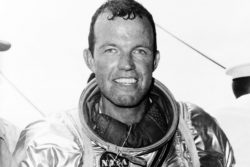
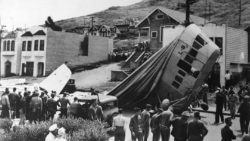
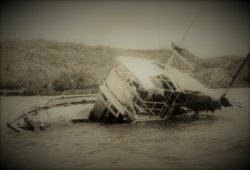
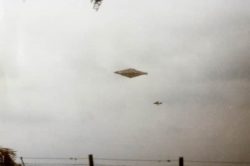
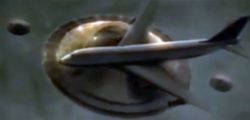
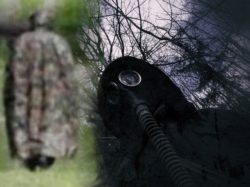
1 Comment
UFO Insight does not take responsibility for the content of the comments below. We take care of filtering profanity as much as we can. The opinions and discussion in the comments below are not the views of UFO Insight, they are the views of the individual posting the comment.
Newest comments appear first, oldest at the bottom. Post a new comment!
Gordon Cooper, butthurt astronaut who stole images of shipwrecks from space for his own gain, was “dan” cooper. it’s pretty obvious to even a child. end of story